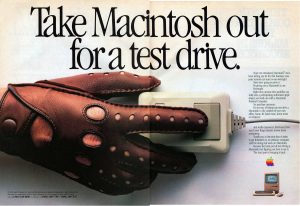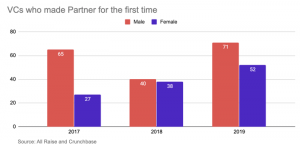 WOMEN IN TECH
WOMEN IN TECH
 WOMEN IN TECH
WOMEN IN TECH
 WOMEN IN TECH
WOMEN IN TECH
Three decades of male dominance in computer science has seen women fighting for equal opportunity, equal pay, and equal treatment. For most of that time, the level of discrimination was quietly swept under the carpet. Then in 2013, software engineer and diversity and inclusion advocate Tracy Chou challenged big tech to publish workplace diversity figures. The resulting statistics revealed just how much of a boys club tech really was.
In the years since Chou’s challenge, a rush of diversity and inclusion initiatives have pushed the gender equality agenda into the spotlight. But there is still a disconnect between diversity goals and workplace equality statistics.
In this report for International Women’s Day, theCUBE takes a look at why women’s lack of confidence is marginalizing them in the technology field and offers advice from successful female executives, engineers and entrepreneurs on how women can claim their power as leaders in tech.
“Believe that you can do it. Believe that only the sky is the limit. Believe that you can do more than you think you can do.” said Mada Seghete, co-founder of Branch Metrics Inc. and alumni of theCUBE Women in Tech.

Image: Cosmopolitan magazine
Technology hasn’t always been a man’s game. In fact, the very earliest computer programmers were female.
“Women are naturals at computer programming,” Rear Admiral Grace Hopper told Cosmopolitan magazine in a 1967 story titled “The Computer Girls.”
From 1963, when the integrated circuit was invented, until the mid-1980s, the number of women in computer science increased sharply. Computer science courses were offered by liberal arts colleges, and women were actively recruited to join the field.

Image: Apple Inc.
Then came 1984, and Apple Inc. challenged IBM Corp.’s PC market supremacy. Suddenly, computers were everywhere, and they were advertised as boy’s toys. Correspondingly, the number of women entering the tech profession started to drop.
But the decline was barely noted, with society seeming to accept the marketer’s line that tech and male were a natural combination.
As the tech industry evolved, that men were better at tech went from an unspoken assumption to an active recruitment strategy. The information technology lab was full of male developers, so hiring more men fit better with the established workplace culture.
Is this changing?
Recent reports show women rising to positions of leadership in tech and other industries. Harvard Law School’s U.S. Board Diversity Trends 2019 found that 46% of newly elected directors were female and that women now hold 27% of directorships across the S&P 500 companies. Women gained 811 board seats within companies represented by the Russell 3000 Index, while men lost 358 according to the 2020 Women on Boards gender diversity index report. This doesn’t necessarily mean women are replacing men; 64% of companies chose to increase board size when they added female directors.
In the tech sector, the Forbes Power Women of 2020 list included Ginni Rometty of IBM, Susan Wojcicki of YouTube LLC, Safra Catz of Oracle Corp., Julie Sweet of Accenture LLP, Sheryl Sandberg of Facebook Inc., and Ruth Porat of Alphabet Inc.

Image: AllRaise and Crunchbase
Adding to this evidence of a positive trend, statistics in the venture capital field show a consistent rise in women VC and general partners.
“There’s never been a better time for female tech entrepreneurs,” said Shellye Archambeau, former chief executive officer of MetricStream Inc.
Archambeau sits on the board of five companies, including Verizon Communications Inc., Roper Technologies Inc., and Okta Inc. As a woman of color in the tech industry, Archambeau’s success is not the norm. But she sees “plenty of offers, [and] plenty of opportunity,” for women to join her at the top. This is due to a demand for skills in which women tend to score higher than men, such as collaboration, communication, team building and leadership, according to Archambeau.
Dao Jensen is the founder and chief executive officer of Kaizen Technology Partners LLC. Like many other female executives, she believes that being female can be an asset. “The positive is you are female and you stand out … use it to your advantage that you are different,” she said in an interview with theCUBE at the 2020 CloudNOW Awards.
While women are starting to be represented in the male-dominated boardroom, they are still definitely a minority. Balancing the success stories above are the stats that men outnumber women four to one in executive positions across the 3,000 largest U.S.-traded companies, while 41% of those companies have only one or no women on the board.
Another female tech executive and board member is Wendy Pfeiffer, chief information officer of Nutanix Inc. and board director with Qualys Inc. and Girls in Tech Inc. Despite the attention on increased numbers of women in executive positions, the rate of change across the workforce is slow, according to Pfeiffer.
“Technologists, particularly in Silicon Valley, are not a diverse set of people,” she said in an interview with theCUBE.
Google LLC was one of the first companies to publicize diversity figures in the wake of Chou’s 2013 challenge. Since 2014, the company has published an annual diversity report. In 2014, the overall workforce was 69.4% male, with the tech team 83.4% men.
Clicking through the figures from then to now shows a barely perceptible change. In 2019, Google still has a global workforce that is 68.4% male, with 77.1% of the tech team being men.
That’s a 1% change in the overall workforce after five years of high-profile diversity and inclusion efforts. At this rate, Google will be lucky to achieve workforce equality before the start of the 22nd century.
Microsoft Corp. and Apple Inc. also publish diversity figures. Over a four-year period, 2014 to 2018, Apple has increased the percentage of female employees by 3%. Better than Google, but still not a figure worth celebrating. In 2017, Microsoft’s global workforce was 73% male to 27% female. By the end of 2019, that had changed to 70.7% male to 29.2% female. Again, this shows a statistical move in the right direction but a very slow one.
It is worth noting that Amazon publishes workforce data that shows a companywide gender diversity of 58.3% male to 41.7% female as of December 2018. At first glance this looks impressive; but the company doesn’t provide breakdown of figures between its different divisions. So these stats include the hundreds of thousands of contract employees working at Amazon’s distribution centers. The data for managers may be more representative of the true diversity among Amazon’s technology employees. In December 2018, the global gender breakdown for managers showed a 73.2% male to 26.8% female split. Not so impressive.
In an industry known for its fast pace, this slow creep toward a more diverse workforce is disheartening. Especially as diversity is no longer just a matter of equality, but can affect a company’s ability to innovate, and its brand reputation.
“There’s more awareness now of the fact that if you hire for cultural fit, you’ll end up with 65 people who are exactly like you. And that’s not optimizing for a successful company,” said Mallun Yen, founder and partner of Operator Collective Management LLC.
Diversity brings new perspectives that are critical for creating products for an equality diverse customer base. “You learn from all the talent around you and the way people think differently about problems,” said Christine Heckart chief executive officer of Scalyr Inc. “That synergy often creates magical outcomes.”
Geeta Schmidt, chief executive officer of Humio Ltd, agrees with Heckart. “Celebrate people’s differences. [You should] feel comfortable and safe when you’re coming with an opposite viewpoint because the diversity of thought is really what we’re trying to include,” she said.
Watch theCUBE’s interviews with Heckart and Schmidt here:
Success in the digital economy requires diversity at every level
Diversity of thought is important across the board, but it is essential in AI. This is because AI researchers are developing technologies that are shaping the future. Diversity within the lab could tip the scales as to AI fulfilling its promise of a golden future for humanity, rather than creating a dystopia where minorities are marginalized by technology.
Yet women still make up only 10% of the AI research staff at Google and 15% at Facebook, according to a 2019 report by New York University’s AI Now Institute. “There is a diversity crisis in the AI sector across gender and race,” the report stated, and, “fixing the ‘pipeline’ won’t fix AI’s diversity problems.”
Monocultural model training is already causing major trust issues with mainstream AI adoption. In February 2020, the Electronic Privacy Information Center filed a petition against the Federal Trade Commission calling for greater oversight of the use of AI in commerce. EPIC had previously filed a complaint about the use of AI in employment screening, a use that has many concerned about hiring bias to white male candidates.
Bias in facial-recognition systems has caused a grassroots rebellion against the technology, both for fear of misuse and because of inaccuracies. Results of facial-recognition vendor tests show higher false positive rates in African and Asian ethnicities than in other groups. This indicates that people of African and Asian heritage are more likely to be misidentified by facial recognition AI than Europeans.
One infamous example occurred when a software engineer tweeted a Google photo where he and his companion were tagged as gorillas. Google immediately apologized and fixed the error. However, rather than remove the implicit biases in the algorithm, Google simply removed the classification of “gorillas.” Problem solved? No.
One problem Archambeau sees is that while there has been a tremendous drive to hire new talent, companies struggle to retain diverse employees. “As much as they’re bringing in the front door, you have leaving the back door,” she said.
Another is that while a lot of resources are available about how to start diversity and inclusion programs, there is little follow-up in terms of impact studies. Rather than throw money at initiatives that may or may not work, companies need to research which diversity and inclusivity initiatives are working, according to Archambeau.

Image: BCG Global Diversity Study 2018
The problem may be that initiatives are focusing on the wrong areas. A study by Boston Consulting Group asked female respondents for the initiatives that would have the most impact on their decision to stay at a company; many requested support for balancing work and family responsibilities, such as flexible work schedules and childcare.
One solution is through technology. Successful women overwhelmingly credit mentors and support networks for helping them maintain self-confidence in the face of workplace discrimination.
“As a young woman, I was never able to relate to the Mark Zuckerbergs of the world — but when I met my mentor, Dr. Rosalind Picard, I saw proof that women could be leaders and pioneers in technology,” said Rana el Kaliouby, co-founder and CEO of Affectiva Inc. and author of the memoir “Girl Decoded.” “Young women need to see examples of people like them, pursuing their passions, so they can be inspired to do the same.”
Charu Sharma, founder and chief executive officer of Next Play Inc., had the same experience. She decided matching employees and willing mentors was too important to be left to chance, so she built NextPlay.ai. The tool works like an intelligent “dating app” that matches employees and willing mentors within a company. Data collected by Next Play shows these mentor-mentee relationships help retention rates.
“[We] have robust analytics to show the ROI on retention,” Sharma told theCUBE.
Watch the entire interview with Sharma here:
Startup puts hard numbers on mentoring with novel software product
The percentage of women working in technology is on the rise again, but at nowhere near the rate of the 1960s, ’70s, and early ’80s. The difference? The cultural idea that computer geeks are boys crouched over computers in dark bedrooms at all hours.
Of course, this is nonsense. Ada Lovelace, Grace Hopper, and all the successful “computer girls” of the past disprove this fallacy just by existing. Not to mention the hundreds, if not thousands, of successful modern women tech founders, engineers and executives. Women clearly have the aptitude to succeed in the technological field.
The legacy of 30 years of white male dominance in technology shows in the lack of confidence women have when it comes to shouting out their tech prowess. But low self-confidence is a self-perpetuating burden that women must overcome.
“Society around us doesn’t necessarily believe that we can do the things that we can do as women,” Seghete said. “So, believing in ourselves is incredibly important.”
Archambeau agrees: “I put my shoulders back and hold my head high and walk in. What happens is that, ultimately, you start achieving things and getting things done, and you start building your career along the way.”
THANK YOU